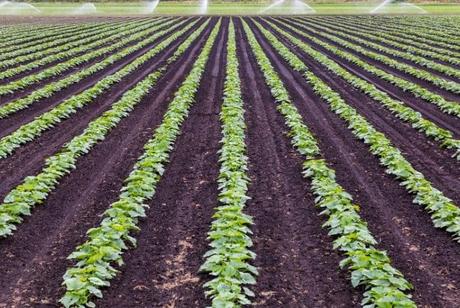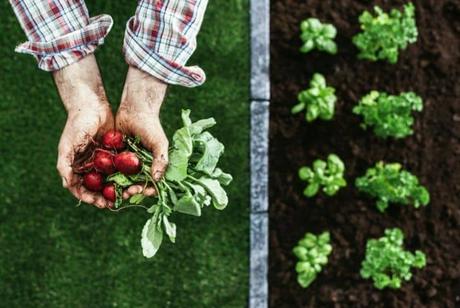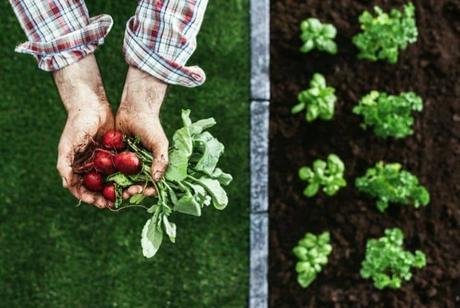What is Commercial Farming?
Commercial farming is all about the growing of crops and/or the rearing of animals for raw materials, food, or export, particularly for profitable reasons.
In order to achieve the economy of scale, therefore, commercial farming needs to be very efficient and practiced on a large scale as the goal of the farmer is to maximize the profit margin.

Contemporary commercial farming hence solely focuses on the production of crops and farm animals for sale, using the most advanced, efficient, and recent technologies.
The practice, also known as agribusiness, is increasingly being taken up and practiced as more and more people partake in it as a lucrative business venture.
Due to this, a lot is invested in terms of capital, manpower, and land, making commercial farming the main driver and influencer of the global agriculture industry.
But then again, commercial farming is worrying to some extent despite its positive results. For instance, lots of fertilizers, insecticides, weed killers and pesticides are used during farming.
Furthermore, it utilizes huge parcels of land and also uses a lot of water. On a planet where the population is expected to reach over 9 billion by 2050, these practices worry about those who are fighting for a sustainable environment.
This article provides more detailed insights about the characteristics of commercial farming, its types, advantages, and examples.
Characteristics of Commercial Farming
The crops and livestock in commercial farming are produced on a large scale, and grown in huge farms, using machinery, irrigation methods, chemical fertilizers, and other technologies.
The basic point of producing such products large scale is to have them exported to other regions or countries, where their demand is high.
For instance, most Gulf nations rely on food imports since the climate in such countries cannot support agriculture. In other nations, mass imports are used as raw materials in industries. The following are the precise characteristics in detail.
1. Large-scale Production
Commercial farming sees livestock and crops produced in large numbers. For this reason, it requires a lot of land, advanced technology, and expertise to meet the expected production targets or goals.
2. It is Capital-intensive
Since the practice requires a lot of investment before it is started it, therefore, implies that it requires a lot of capital to get it up and running.
The capital is used to purchase farm materials such as seedlings or seeds, fertilizers and pesticides, machinery, the farm itself, and in paying for the expenses incurred such as water and electricity bills, and in paying for labor, and expertise.
3. The Use of High Yielding Varieties (HYV)
The practice of commercial farming uses high doses of modern inputs and high yielding varieties of seeds, chemical fertilizers, pesticides, weed killers, and insecticides. This is done to obtain higher production but has detrimental effects on environmental sustainability.
4. It is Produced for Sale
As opposed to other forms of agriculture where people farm for their use, commercial farming is done for sale only.
Under commercial agriculture, the thousands of acres of products such as millet, cocoa, bananas, rice, sugarcane, tea, and other products are harvested and sold, mainly as exports to other countries.
5. Heavy Machinery and Human Labor
Commercial farming requires large supplies of both skilled and unskilled labor. While skilled labor in commercial labor comes from professionals, unskilled labor tends to exploit immigrants and persons who live in absolute poverty.
It also requires heavy machinery such as diggers, trailed sprayers, plows, harvesters, and planters just to mention a few to meet the targets and goals in time, as well as meet the skills of the system of production.
6. In Most Cases, One Type of Agricultural Practice is Done in a Large Area
As much as commercial farming may involve different agricultural practices within the same parcel of land or region, it mainly involves large scale farming of one type of agricultural practice such as aquaponics, beef farming, dairy farming, chicken farming, coffee farming, sugarcane farming, specialized fruit plantation, flower farming, and tea farming among many others in one region or large piece of land.
Examples include the vast farms of tea in India and Kenya, the coffee plantations in Brazil and India, banana production in Uganda, beef farming in the United States, and sugarcane farms in Indonesia and Mexico. The degree of area coverage may vary from one region to the other.
7. The Practice is Traditionally Done all Year Round
Commercial agriculture is unique as the farmers can irrigate the land or keep the farm systems under operation all year round.
They do not rely on the rains or natural supplies as ordinary farmers do since they have advanced technologies, machines, and artificial growth enhancers to have their crops or animals sustained throughout.
Types of Commercial Farming
1. Dairy Farming
As the name suggests, it is the commercial farming of milk and milk products. The farms are, therefore, solely used to rear cattle, which produce the milk used to make other dairy products.
In Italy, for example, donkeys are reared to produce an alternative source of milk for infants. Other animals farmed for dairy include goats, camels and sheep.
According to Statista, the leading producer of cow milk in the world is the European Union, producing 155.3 million metric tons of milk in 2019. The US is second, producing 99.16 million metric tons.
2. Grain Farming
With this type of commercial farming, grains such as corn, barley and wheat are grown for human consumption and exports.
Grain farming is highly mechanized and requires sufficient amounts of land, machinery, equipment and farmers. The farming is outdoor and is seasonal, meaning farmers are exceptionally busy during the planting and harvesting seasons.
3. Plantation Farming
It is a highly sensitive type of farming, as it used to be practiced during colonial and slavery periods.
Large farms, especially in America and its colonies used enforced slave labor to grow and harvest rice, sugar, tobacco, cotton and other farm products, for trade and export.
Today, plantation farming continues, but instead of using forced slave labor, workers are paid low wages, which allows them to continue working in such plantations.
4. Livestock Ranching
This is the raising of livestock animals for their meat products. The most commonly reared animals are cattle and sheep, although you might find pigs and chicken reared in large numbers as well.
Livestock ranching is the primary source of beef, poultry and pork meats available in most major urban markets. The United States, Brazil and the European Union are the top producers of beef in the world, accounting for about 47% of the world’s beef.
5. Mediterranean Agriculture
It is a type of commercial farming, primarily practiced in the Mediterranean countries.
The climate within such areas is perfect for growing certain crops such as grapes, figs, dates, and olives. Also, the climate supports horticulture, processing vegetables, and flowers among other crops.
6. Mixed Crop and Livestock Farming
In the types above, one single crop or livestock is farmed. However, in this type of commercial farming, both crops and livestock are farmed in the same piece of land.
As such, the crops can be grown to feed the animals, and the animals sold for profit. Additionally, animal waste can be used to grow crops. The two live and are farmed side-by-side all year round. A great modern example is Aquaponics.
7. Commercial Gardening and Fruit Farming (truck farming)
In truck farming, crops that are high in demand are grown. They include apples, lettuce, cherries and asparagus.

Advantages of Commercial Farming
1. Encouraging Improvement in Local Infrastructure
Commercial farming helps an area or country establish or improve the infrastructure of the area, such as roads and electricity.
For instance, commercial farms rely on electricity and in having the farms wired with electricity, the surrounding communities will also be wired. Also, when the roads are improved, they help both the farms and the people who live nearby.
Also, water is piped into the surrounding communities.
2. Job Creation
Commercial farming is a source of jobs for persons living within the area. The workers will earn some money, enabling them to provide food for their families. As such, commercial farming stimulates the growth of the local economy.
3. Lowering the Price of Products
Commercial farming helps decrease the cost of agricultural products since the crops are available in the market in enough numbers. The forces of demand and supply, therefore, operate to lower the prices of such commodities.
4. Increased Production and Enhancing Food Security
Commercial farming mechanizes operations, controls diseases and pests, enabling the farms to produce more. As a result, commercial farmers increase production, helping increase the national stock of food products.
5. Provision of Raw Materials for Agribusiness Manufacturing Companies
Commercial farming avails more raw materials to feed the local and international industries that engage in the production or manufacture of agricultural by-products.
For instance, the manufacture of juices is enabled by the farming of fruits such as pineapples, mangoes and oranges in commercial quantities. Coffee and cocoa farming also serves the confectionery industries.
6. Lowering the Cost of Production
Since farmers employ more efficient methods of production, like the use of harvesters, ploughs, harrowers, and planters, the operations of the commercial farmer become cheaper in the long run.
7. Foreign Exchange earner
Commercial farming helps countries in the world earn a high foreign exchange. For instance, in West Africa, cocoa and coffee exports have earned the respective countries lucrative foreign exchange, which is an economic growth booster.
Examples of Commercial Farming
1. Tobacco Farming
Tobacco is commercially farmed in semi-arid and rain-fed areas, where alternative crops and economically unviable. As such, India is a prime example of tobacco commercial farming and is the world’s second-largest producer of tobacco.
2. Cotton Farming
Cotton is a plantation crop and is the raw material for the cotton textile industry. It thrives on black and alluvial soil with low rainfall, bright sunshine and no snow. It is heavily produced in the US, Pakistan, Egypt, China, and India.
3. Wheat Farming
Wheat is a staple food in the world and it grows in moderate temperature regions. It requires good rainfall during planting and adequate sunshine when harvesting. It, therefore, grows well in northern India during the winter seasons.
4. Rice Farming
Rice is a staple food all over the world. It requires high heat, humidity, and rainfall. It thrives in West Bengal and other North-Eastern parts of India.
The world’s leading producer of rice is China. Other top producers are Bangladesh, Japan, and Sri Lanka.
5. Maize Farming
Maize, like wheat, requires moderate rainfall and adequate sunshine. It, therefore, grows well in the United States, Mexico, Brazil, India, Canada and Russia.
6. Tea Farming
Tea is an important beverage all over the world. It grows best in a sloping landscape where there is adequate rainfall all year long, and temperatures are cool and not high. It grows well in China, Kenya, India and Sri Lanka.
7. Coffee Farming
Coffee thrives in a warm and wet climate on well-drained soil. It is, therefore, grown massively in Brazil, Columbia and India
8. Beef and Milk Farming
Beef and milk come from cattle, meaning cattle have to be reared in high numbers. Dairy cattle breeds such as Friesian, Jersey and Ayrshire are the best producers of milk.
India is the world’s largest producer of milk at 22%, with other countries such as the US, China, Pakistan and Brazil, also being top producers.
According to Beef 2 Live, the United States produces about 20% of the world’s beef, followed by Brazil and the European Union at 15% and 13% respectively.
References:
http://www.fao.org/dairy-production-products/production/en/
Commercial Farming Issues
National Study of Commerical Farming


